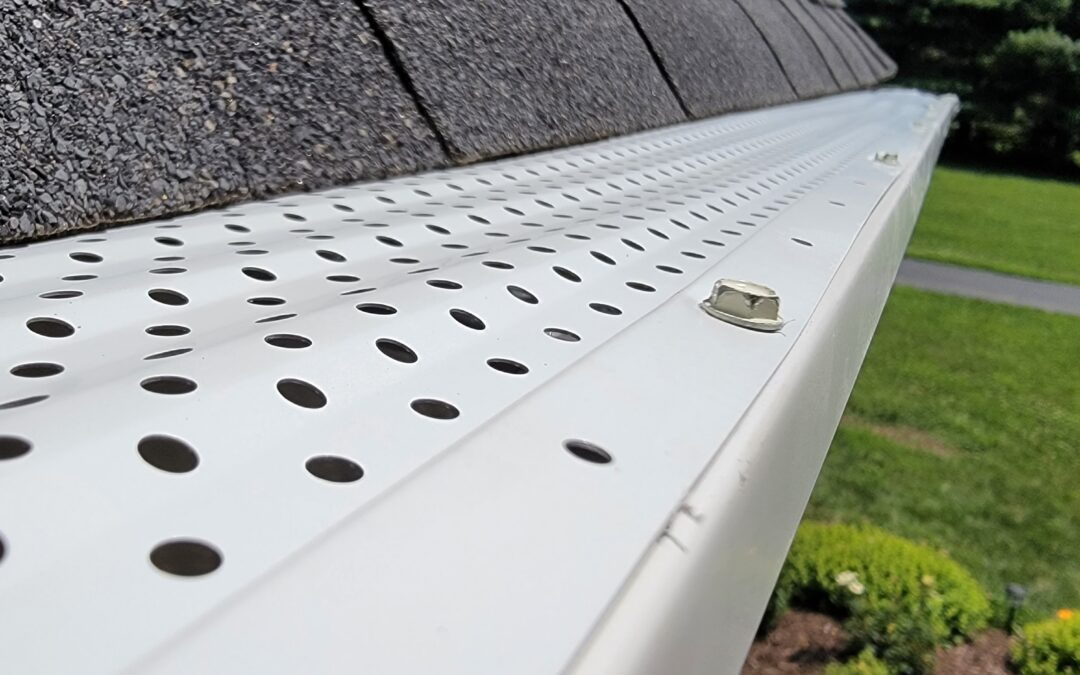In the realm of home maintenance, gutters often play an unsung hero role, quietly directing rainwater away from your home’s foundation and protecting it from potential damage. But for gutters to perform their duty effectively, they need proper maintenance, and one essential aspect of this is gutter guards. If you’re a homeowner in Lexington, KY, considering gutter guards for your home, you’re in the right place. In this comprehensive guide brought to you by Wildcat Gutters, we’ll delve into all aspects of gutter guards, from their benefits and types to their installation and maintenance.
Understanding Gutter Guards: What Are They?
Gutter guards are protective coverings placed over your gutters to prevent debris such as leaves, twigs, and pine needles from clogging them. They allow water to flow freely through the gutter system while keeping out unwanted debris. Think of them as a shield for your gutters, ensuring they remain clear and functional even during heavy rain or snowfall.
The Benefits of Gutter Guards
- Prevent Clogging: The primary purpose of gutter guards is to prevent debris buildup, which in turn reduces the chances of clogging. Clogged gutters can lead to water overflow, causing damage to your home’s exterior and foundation.
- Reduced Maintenance: With gutter guards in place, you’ll spend less time cleaning out your gutters. While occasional maintenance may still be necessary, it will be far less frequent and time-consuming than without gutter guards.
- Prolonged Gutter Lifespan: By preventing clogs and minimizing the accumulation of debris, gutter guards help extend the lifespan of your gutter system. This means fewer repairs and replacements.
- Prevention of Pest Infestations: Clogged gutters can become a breeding ground for pests such as mosquitoes, rodents, and birds. Gutter guards act as a barrier, preventing these pests from nesting in your gutters and potentially entering your home.
Types of Gutter Guards
- Screen Guards: These are mesh-like screens that cover the top of the gutter, allowing water to flow through while blocking debris. They are relatively easy to install and are suitable for most residential gutter systems.
- Surface Tension Guards: Also known as “reverse curve” gutter guards, these guards are designed to allow water to cling to the guard’s surface while debris falls off. They are highly effective but may require professional installation.
- Foam Guards: Foam gutter guards are made of porous foam that fits directly into the gutter, allowing water to pass through while blocking debris. They are easy to install but may require more frequent maintenance.
- Brush Guards: These consist of bristles or brushes that sit inside the gutter, allowing water to flow through while trapping debris on top. They are effective against large debris but may become clogged with smaller particles.
Installation and Maintenance
While some gutter guards can be installed by homeowners, it’s often best to leave this task to professionals like Wildcat Gutters. Professional installation ensures proper fitting and optimal performance of the gutter guards. Additionally, regular maintenance is essential to keep gutter guards functioning effectively. This may include removing debris from the surface of the guards and inspecting them for any signs of damage.
Conclusion
Gutter guards are a valuable addition to any home, offering numerous benefits such as preventing clogs, reducing maintenance, and prolonging the lifespan of your gutters. Whether you opt for screen guards, surface tension guards, foam guards, or brush guards, the key is to choose a solution that suits your specific needs and budget. For homeowners in Lexington, KY, looking to enhance their gutter system with high-quality guards, Wildcat Gutters is here to help. Contact us today to learn more about our gutter guard options and professional installation services.

